Karl Haendel has a CV peppered with prestige – he has shown in excellent spaces and biennials, won excellent awards, and has work in the public collections of MoMA, MoCA, and Guggenheim to name a few. If the bounce toward of tight graphite appropriation and reproduction in high art wanted a figurehead, Haendel would make a good one. However, as his current exhibition My Invisible Friend at Tony Wight demonstrates, Haendel appears to have serious reservations about whether that kind of work is really all that interesting on its own.
Haendel’s installation of his work is curiously extensive. The white cube of Tony Wight Gallery is now a middle-dark grey, but why a grey cube is more appropriate isn’t clear. Short museum walls are built in, blocking sight lines and forcing proximity to the work, but these gestures of audience manipulation seem arbitrary. Coca-cola cans, tools, paint cans, and extra bits of installation junk are arranged in neat false refuse piles which declare the show’s man-made construction but degrade the works on the walls, which are hung awkwardly in dim clusters and corners. As audacious as it is, it isn’t unusual for the artist, who has hung plenty of shows that make My Invisible Friend look conservative.
But why do it this way? The gestures Haendel has made with his installation push the show in two opposite directions. In one direction, the artist is bringing down the artwork and up the space to some middle-ground where they can be considered equally, subverting the usual hierarchy of the gallery. In another, the over-production of the installation references and mirrors the intense over-production of the work itself, making the gallery space a kind of over-miked back-up band for the artworks. Caught between these two forces, it isn’t clear whether Haendel wants viewers to see or care about his drawings.
There is a problematic collision between an over-produced install which minimizes the importance of art objects and an exhibition which is actually and mostly about showing art objects. If these works are meant to be looked at, cared about, and purchased, then the installation comes off as a matter of making up for something lacking in the work. None of the artwork in My Invisible Friend is too far out, and such a far out install suggests Haendel’s opinion is that given a straight-on hanging, the work wouldn’t be as interesting as he wants it to be.
As for the work itself, while I wouldn’t call any of it audacious, Haendel has made some good stuff. The show is made up of graphite on paper reproductions of Tom & Jerry comic strip panels, video and drawings of a partial suit of armor from various angles, enamel paintings of broken glass, a number of (great looking) graphite, enamel, and charcoal folded abstractions also resembling broken glass, and a text-piece sampling Hans Abbling‘s power-point slide titled Are low incomes problematic? from his lecture, Why are artists poor?. In a regular setting, My Invisible Friend would read as a not-too-thrilling look at labor-intensive artistic production as a response to various other forms of productive activity. Here, however, that content is complemented to obscurity by the over-production of the exhibition’s installation.
I give it a:
7.0
Karl Haendel‘s My Invisible Friend runs October 15th through November 13th, 2010 at Tony Wight Gallery, 845 W Washington Blvd.

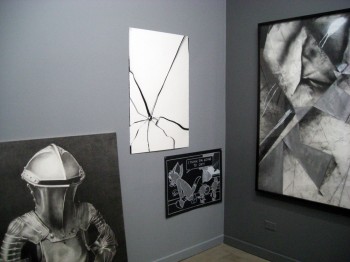
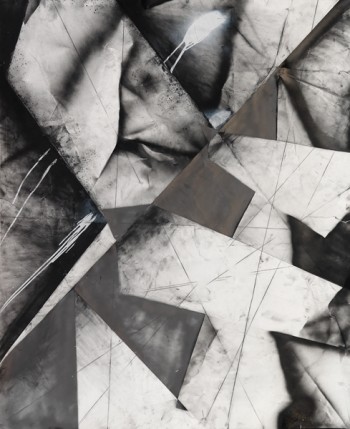
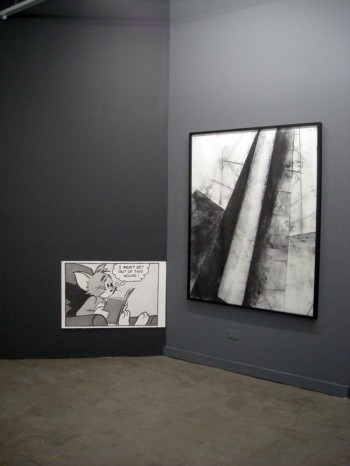
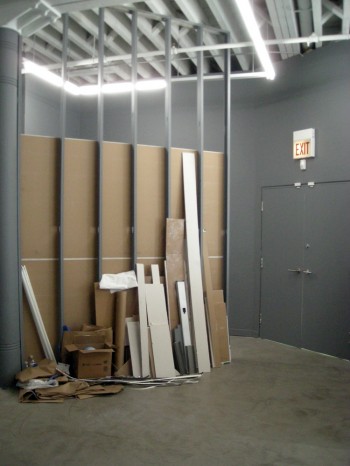
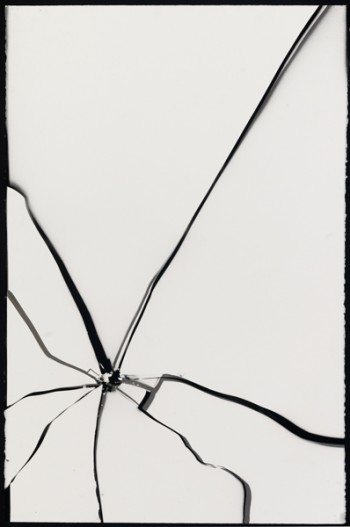
Post a Comment